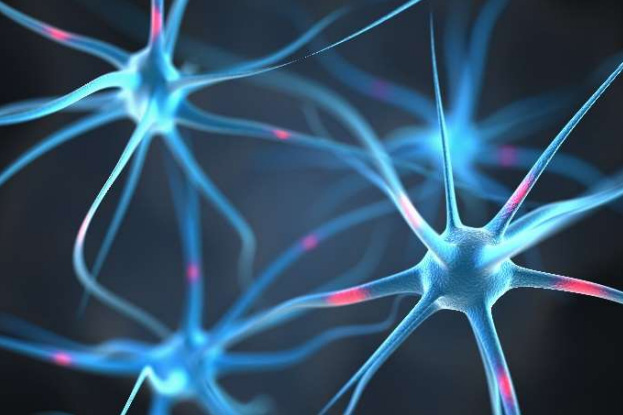Education 4.0
New technologies will transform education and the pandemic is accelerating the process – a key feature will be the diversity of solutions
Alan Carr: Director, Mobius Consultants Limited
Artificial intelligence and other technologies will transform education by putting learners in charge of their own education, by tailoring the learning experience to differing student needs and through redefining the traditional roles of schools and universities. The result will be a fourth revolution in education – Education 4.0. The process has accelerated as a consequence of the Covid-19 pandemic and it is becoming clear there will be no one standard model. Instead, there will be considerable diversity in the way Education 4.0 is implemented.
A revolution in education
 In his book, The Fourth Education Revolution Reconsidered, Sir Anthony Seldon argues that AI will bring about a fourth revolution in education. The first revolution occurred when early humans began to pass on basic knowledge about survival. The second started some 4,000 years ago and led to early schools and universities, but only for a very small minority of the population. A third revolution followed the invention of the printing press and by around 1600 the current “factory” education system was established. It has evolved only incrementally since – schools and universities now are fundamentally the same as they were 200 years ago (photo).
In his book, The Fourth Education Revolution Reconsidered, Sir Anthony Seldon argues that AI will bring about a fourth revolution in education. The first revolution occurred when early humans began to pass on basic knowledge about survival. The second started some 4,000 years ago and led to early schools and universities, but only for a very small minority of the population. A third revolution followed the invention of the printing press and by around 1600 the current “factory” education system was established. It has evolved only incrementally since – schools and universities now are fundamentally the same as they were 200 years ago (photo).
Other sectors such as finance, retail and transportation have been transformed by technology from where they were 200 years ago. But little has changed in the way schools and universities operate. There were high hopes for IT in schools, but the results are mostly disappointing – several studies have shown no link between the amount countries spend on IT in schools and student performance.
Just recently, artificial intelligence has become a hot area of technology. It has come to public attention through successful applications in speech recognition and search engines, as well as by beating the best human players in chess and other games. AI and some other technologies have the potential to bring about a fourth education revolution – Education 4.0.
This paper is based on a Mobius Insight published in September 2018. In this update, we assess the impact of the Covid-19 pandemic and analyse what Education 4.0 will look like in practice.
What’s wrong with what we have?
Personalisation – A fundamental part of education systems worldwide is that students learn in groups from a teacher or lecturer. But it is increasingly being realised that students have very different needs in the way they learn. The current Education 3.0 system leaves little scope to
personalise learning to meet these needs. Private tutors are one way to introduce personalisation, but quality is highly variable and it is too expensive for many parents.
Student focus – Another problem is the narrow focus of modern education. Educationalists such as Ken Robinson lament the rise of teaching systems that use rigid curricula, set simplistic standards and focus on learning how to pass exams. This is made worse where schools and universities concentrate on rankings rather than providing the best education they can for each student. The result is a failure to provide the type of rounded education today’s students need, particularly when it comes to skills such as communication, reasoning, decision-making and creativity.
Evidence-based learning – Education has been subject to more than its fair share of pseudoscience. The UK Government once endorsed the idea of Educational Kinesiology in which one exercise is claimed to increase the flow of electromagnetic energy and help the brain send messages from the right to left hemisphere! Progress is being made to counter such nonsense
including a more evidence-based approach. For example, the UK’s Education Endowment Foundation combines educational research with rigorous large-scale trials to find out what actually works.
Scaling up – Current education systems are not capable of scaling up to meet modern needs. A hundred years ago, top quality schools and universities in developed countries provided a good education for a small elite, with everyone else receiving a basic education. This no longer meets
the needs of modern economies or the expectations of their citizens. But there are insufficient good teachers and other resources to provide the type of education previously reserved for the elite to everyone. In the developing world, the situation is most acute with some 1bn children needing a good education. Current systems simply cannot scale-up to meet these demands.
What about the technology?
The single most important technology behind Education 4.0 is artificial intelligence (AI). A definition of AI is where a computational system performs a task generally accepted to require human intelligence. AI was originally developed between the 1950s and mid-70s but, after initial expectations were not realised, there followed a “AI winter” when little progress was made. Interest picked up again in the mid-1990s, but practical applications were few and far between. The “big bang” for AI came after 2010 driven by much better computational platforms and access to large volumes of data mostly harvested using the Internet.
For the first time, the capabilities of AI are now visible to the public and include speech recognition in Amazon’s Alexa, face recognition on Apple smartphones, automated language translation from Google and cleverly targeted advertising on social media. Although of less practical use, the rapid pace of progress was shown in 2017 when the UK company DeepMind
produced a system capable of teaching itself to be a world-class chess player in 4 hours with no prior knowledge other than the rules of the game.
 The branch of AI attracting most attention is deep learning. Deep learning is a development of artificial neural networks as originally developed in the 1960s (the illustration shows a natural neural network). An artificial neural network is a computer program implementing a network of interconnected neurons where each neuron takes the form of a simple mathematical calculation. In deep learning, the network of neurons is much larger and is combined with other data processing and training techniques. This is the system that led to breakthroughs such as image recognition, language translation and game playing. The main requirements are high performance computing and plenty of data to train the system.
The branch of AI attracting most attention is deep learning. Deep learning is a development of artificial neural networks as originally developed in the 1960s (the illustration shows a natural neural network). An artificial neural network is a computer program implementing a network of interconnected neurons where each neuron takes the form of a simple mathematical calculation. In deep learning, the network of neurons is much larger and is combined with other data processing and training techniques. This is the system that led to breakthroughs such as image recognition, language translation and game playing. The main requirements are high performance computing and plenty of data to train the system.
Although spectacular results have been achieved, it is important to realise the applications where AI has been successful are very specific and self-contained – for example face recognition. This is a long way from anything resembling so-called generalised intelligence which humans show routinely. Thankfully, AI that in any way resembles the generalised intelligence depicted in movies such as Terminator remains pure science fiction.
AI will be a vital component in Education 4.0, but other technologies, although currently less fashionable, will also be vital:
1. High bandwidth connectivity, smartphones and seamless multimedia services. The rollout of 5G mobile networks will greatly improve capabilities here
2. Using a cloud provider such as Amazon Web Services or Microsoft’s Azure makes it easier to set up and run digital education platforms and greatly enhances scalability
3. Scalable Content Object Reference Model (SCORM) and the newer Experience API (xAPI) standards greatly simplify the integration of digital platforms and educational content
4. Virtual reality and augmented reality. These technologies are now available in low cost formats and can provide new and exciting learning experiences for stduents.
Education 4.0 now
Some early examples of a new approach to education emerged in California. A good example is AltSchools where the focus is on personalised learning. Students have a personalised record of their progress and a playlist guiding them through a set of education content. In this way,
teachers are freed up from the detail of marking and planning lessons and can focus on group working, social skills and one-to-one tuition. A criticism of AltSchools is their high cost. This is addressed in the Summit network of schools which also use digital methods and yet are targeted at poorer students. In this case, students spend around half their time on teacher-led project work using time freed up through digital learning methods.
Another example, the Indian company Mindspark, draws on a set of 45,000 questions and 2m answers per day to identify patterns in incorrect answers. When such patterns are recognised, the system recommends specific remedial exercises. In yet other cases, AI is used in language training systems to help students speak a foreign language. Common mistakes are recognised, and techniques recommended for correction.
A different type of system is the Squirrel after-school system in China where AI techniques are used to create a personalised tutoring system to assist students preparing for the all-important Gaokao national university entrance exam. The digital platform is augmented by Squirrel Study
Centers. By contrast in the UK, the main focus is on bringing AI systems such as the Century Tech adaptive learning system into schools to assist teachers and students alike.
Mobius has been leading another initiative in which digital education is being applied to provide a better education to more than 5m public school students in Saudi Arabia. This is done through a mix of online lessons, one-to-one virtual tutoring and high-quality educational content. The system is provided to students outside school hours to lift standards in a country where public education ranks poorly against other countries.
Ascertaining the actual uptake of AI in education can be confusing since many education companies claim their products utilise AI methods to improve performance. Few details are normally provided and much of this “AI” is likely more marketing rather than reality.
To conclude, Education 4.0 is starting to have an impact in a variety of ways but, for now, is way short of being a revolution!
The impact of Covid-19
The Covid-19 pandemic caused a major shock to education systems worldwide. Many schools were shut at short notice and the race was on to introduce distance learning as quickly as possible. In some cases, this was done locally by individual schools and in other cases by groups of schools or at a national level. In general, the result is only part-way to Education 4.0, with the main focus being on delivering Education 3.0 at a distance using video conferencing systems such as Zoom.
Some of the experience gained was on show at the annual BETT conference in January 2021. This is the largest international education technology event in the world; normally it is held in London, but in 2021 delivery was virtual for the first time. A feature of the event was the innovation shown by schools and teachers adapting to school closures. It was clear the pandemic will rapidly accelerate progress towards Education 4.0. Much has been learned about the use of technology in education and this will be invaluable in a more general push towards Education 4.0.
One finding from the pandemic is that real teachers remain an essential part of the education process. Pure digital education systems are not generally successful. However, the role of teachers is already starting to change with more emphasis on reinforcement, tutoring and coaching and less on traditional lesson presentation.
Education 4.0 in future
The way Education 4.0 is applied will vary depending on the situation. Many high quality (and high cost) schools will choose to introduce
Many high quality (and high cost) schools will choose to introduce
the technology under their own control. Students will benefit from greater personalisation through the digital dimension than is possible in the
traditional classroom alone. Teachers will benefit from a reduction of time spent on tasks such as administration and marking, leaving more time to
work directly with stduents. In this model, the school format will likely continue as before, albeit the role of teachers will change over time.
In other cases, Education 4.0 will be delivered in the form of an after-school service. This may be to improve performance in examinations or to provide skills not well covered in conventional schools such computer coding, entrepreneurship and team working. This format may take place in partnership with schools or may be entirely independent. Such systems will employ AI for personalisation and yet still provide access to real teachers by means of scheduled live classes and perhaps the opportunity for one-to-one tutorials – all of course delivered virtually.
In countries where schools are weak or non-existent, yet another option is for virtual schools delivered digitally as a complete replacement to conventional schooling. This is most likely to apply in under-developed parts of the world, in remote areas, or where students do not have access to local schools – for example in military families. This form of schooling is likely to be less than ideal since there is no direct contact between stduents and teachers. But the impact can be mitigated through virtual communication – eg chat, live one-to-one sessions, group working, etc. It may also be possible to provide a network of study centers as in the case of the Chinese Squirrel system reported above. Making this model work is perhaps the greatest challenge for Education 4.0. If it can be done, this could transform education for more than 1bn stduents in under-developed countries.
And finally, of course, there will be hybrids of the above models. For example, a real school operating alongside a digital after-school service, or a full virtual schooling system supported by visits to real schools during vacations for reinforcement and to develop social skills.
Our view
Most education worldwide is delivered using a system dating back at least 200 years. The system is so engrained, it is widely perceived to be the only way to educate children. And yet a growing body of experience around the world shows there is a better way of doing things using artificial intelligence and related technologies. This is Education 4.0.
In our view:
- The pandemic has dramatically accelerated the uptake of digital technologies in education – perhaps the one good thing to come from the pandemic
- Education 4.0 involves a shift from school-led to student-led learning as true personalisation becomes possible on a large scale
- Teachers remain vital, but their role will be different. Techers will focus on problem solving, facilitation, coaching and mentoring
- Team and group working is important and can be augmented using digital methods such as virtual teams and project assignments.
Having established the principles, the focus shifts to how Education 4.0 will be implemented. A remarkable feature of education systems worldwide is how closely they follow the same model of classrooms, schools, lessons, teachers, curricula, etc. We think this will be different with Education 4.0 where a key feature will be the diversity of implementation. Some schools will take up digital learning alongside a conventional school model. Other examples will be in the form of after-schools services operating alongside schools. In yet other cases, the entre schooling process could be delivered virtually.
There has been a lot of talk on using AI and other technologies for Education 4.0. As we emerge from the pandemic and with the experience gained from this, now is the time for action to deliver a revolution in education.
